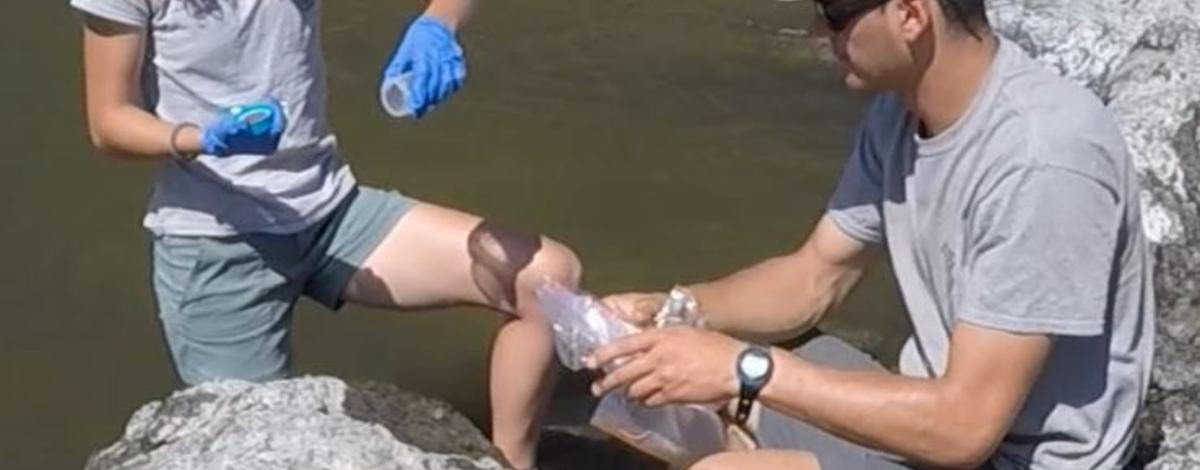Did you know determining a species distribution can be as easy as taking a water sample? Recently, IDFG crews collected environmental DNA (eDNA) samples to help fisheries biologists and managers understand Pacific Lamprey distribution in the Snake River downstream of Hell's Canyon Dam. The USDA Rocky Mountain Research Station, in Missoula, has organized a project that will process the samples and report the findings. IDFG's collections will be added to other samples taken across Idaho to help agencies get a better understanding of current lamprey distribution not just below Hell's Canyon Dam, but across the state.
Environmental DNA, known as eDNA, is genetic material released by organisms into the environment. All living organisms shed cells containing DNA and leave the material in the water, soil, and air. Incidental to our routine work this summer, we collected eDNA samples by pumping river water through a filter, similar to a coffee filter, that traps the eDNA.
Pacific Lamprey, like salmon, are anadromous fish that migrate between Idaho waters and the Pacific Ocean during their lifetime. The juvenile lamprey spend a lot of time in freshwater before heading to the ocean. Juvenile lamprey can live buried in the sand found in Idaho's rivers for up to seven years, making them very difficult to detect. eDNA has provided a great tool for learning more about where these juvenile lamprey are living.

